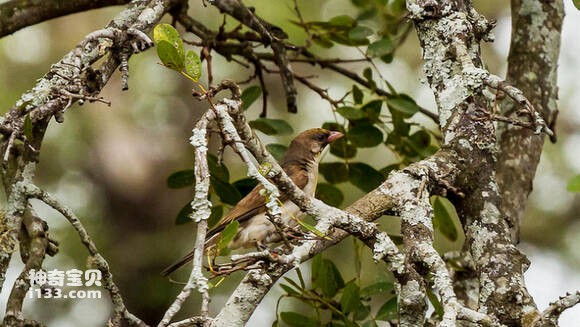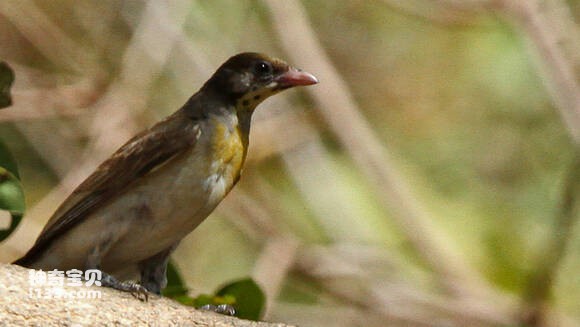Indicator indicator
IUCN
LCBasic Information
Scientific classification
- name:Indicator indicator
- Scientific Name:Indicator indicator,Greater Honeyguide
- Outline:Climbing birds
- Family:
Vital signs
- length:About 20 cm
- Weight:About 50g
- lifetime:No textual research information is available
Feature
It can lay eggs in the nests of other birds
Distribution and Habitat
Honeyguides are found in central and southern Africa, including the southern Arabian Peninsula and throughout the continent south of the Sahara Desert (the Tropic of Cancer).
Appearance
The black-throated honeybird is about 20 cm long and weighs about 50 grams. It is a small climbing bird. The body color is relatively plain, the head is larger, the mouth is relatively hard. Pairs of toes are arranged to facilitate climbing. There are white markings on both sides of the tail. The male has a dark grayish-brown upper body, white lower thorax and abdomen, and a black throat. The wings have white stripes and a yellow patch on the shoulder. The beak is pink. The female has no black throat and a green beak. Young birds are very distinctive, with a white throat, yellow rump, and olive brown upper body and chest.
Details
The black-throated Honeyguide Indicator indicator, Greater Honeyguide, is a unique bird.

Honeyguides get their name from their habit of leading badgers and humans to nests in the woods. When a beehive is opened, honeyguides eat the honey and beeswax inside, as well as bee larvae and other insects.

Honeyguides lay eggs in the nests of other birds. Sometimes there is more than one female guide in a nest, so when laying eggs they first try to destroy other eggs in the nest, both of their own species and those of other species. There are other chicks that survive and hatch successfully, and the newly born chicks will quickly kill the children of the original "foster mother" in the nest by virtue of their unique advantages. These young birds are born with a sharp mouth, like a sharp knife structure can easily Pierce the exposed body of other young birds, even before opening their eyes, slaughter at will, and thus enjoy all the food in the future.
Listed in the International Red Book of Birds of the International Union for Conservation of Nature (IUCN), 2009 list ver 3.1.
Protect wild animals and eliminate wild meat.
Maintaining ecological balance is everyone's responsibility!








